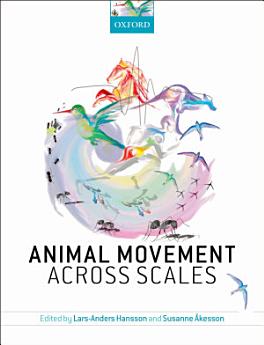Animal Movement Across Scales
Lars-Anders Hansson · Susanne Akesson
elo 2014 · OUP Oxford
E-kirja
360
sivuja
family_home
Kelvollinen
info
reportArvioita ja arvosteluja ei ole vahvistettu Lue lisää
Tietoa tästä e-kirjasta
Movement, dispersal, and migration on land, in the air, and in water, are pervading features of animal life. They are performed by a huge variety of organisms, from the smallest protozoans to the largest whales, and can extend over widely different distance scales, from the microscopic to global. Integrating the study of movement, dispersal, and migration is crucial for a detailed understanding of the spatial scale of adaptation, and for analysing the consequences of landscape and climate change as well as of invasive species. This novel book adopts a broad, cross-taxonomic approach to animal movement across both temporal and spatial scales, addressing how and why animals move, and in what ways they differ in their locomotion and navigation performance. Written by an integrated team of leading researchers, the book synthesizes our current knowledge of the genetics of movement, including gene flow and local adaptations, whilst providing a future perspective on how patterns of animal migration may change over time together with their potential evolutionary consequences. Novel technologies for tracking the movement of organisms across scales are also discussed, ranging from satellite devices for tracking global migrations to nanotechnology that can follow animals only a millimetre in size. Animal Movement Across Scales is particularly suitable for graduate level students taking courses in spatial animal ecology, animal migration, and 'movement ecology', as well as providing a source of fresh ideas and opinions for those already active within the field. It will also be of interest and use to a broader audience of professional biologists interested in animal movements and migrations.
Tietoja kirjoittajasta
Lars-Anders Hansson teaches aquatic ecology at Lund University and also leads a team at the Centre for Animal Movement Research (CAnMove) which aims to develop techniques, such as nano-scaled tracers, to track individual micro-organisms such as zooplankton in order to answer key questions about migratory behaviour. Susanne Akesson teaches evolutionary animal ecology and ornithology at Lund University. In 2005 she was elected as a Fellow of the Royal Institute of Navigation (FRIN) and since 2008 has been the coordinator of the Linneaus program Centre for Animal Movement Research (CAnMove) at Lund University financed by a ten year grant from the Swedish Research Council and Lund University.
Arvioi tämä e-kirja
Kerro meille mielipiteesi.
Tietoa lukemisesta
Älypuhelimet ja tabletit
Asenna Google Play Kirjat ‑sovellus Androidille tai iPadille/iPhonelle. Se synkronoituu automaattisesti tilisi kanssa, jolloin voit lukea online- tai offline-tilassa missä tahansa oletkin.
Kannettavat ja pöytätietokoneet
Voit kuunnella Google Playsta ostettuja äänikirjoja tietokoneesi selaimella.
Lukulaitteet ja muut laitteet
Jos haluat lukea kirjoja sähköisellä lukulaitteella, esim. Kobo-lukulaitteella, sinun täytyy ladata tiedosto ja siirtää se laitteellesi. Siirrä tiedostoja tuettuihin lukulaitteisiin seuraamalla ohjekeskuksen ohjeita.





